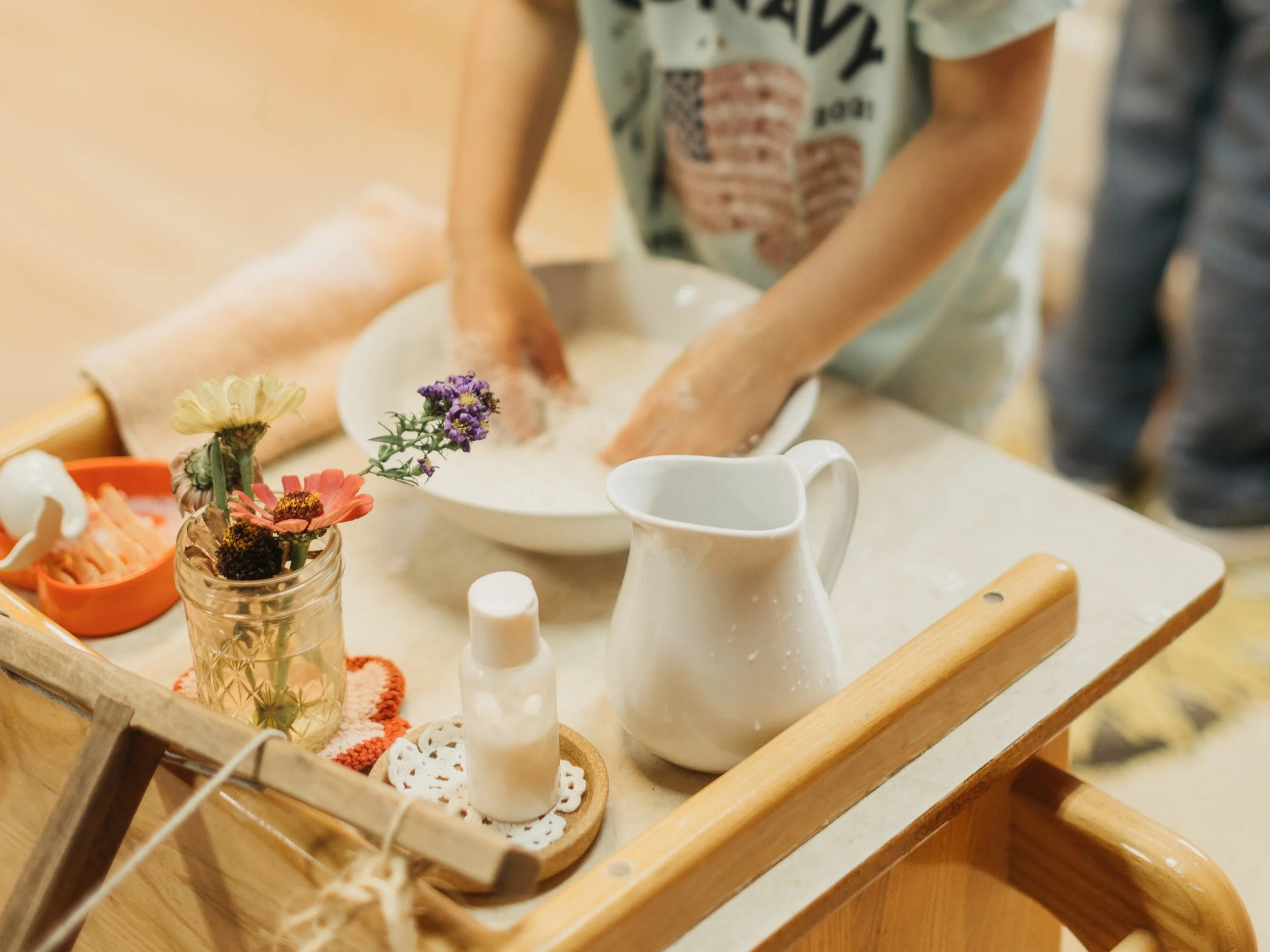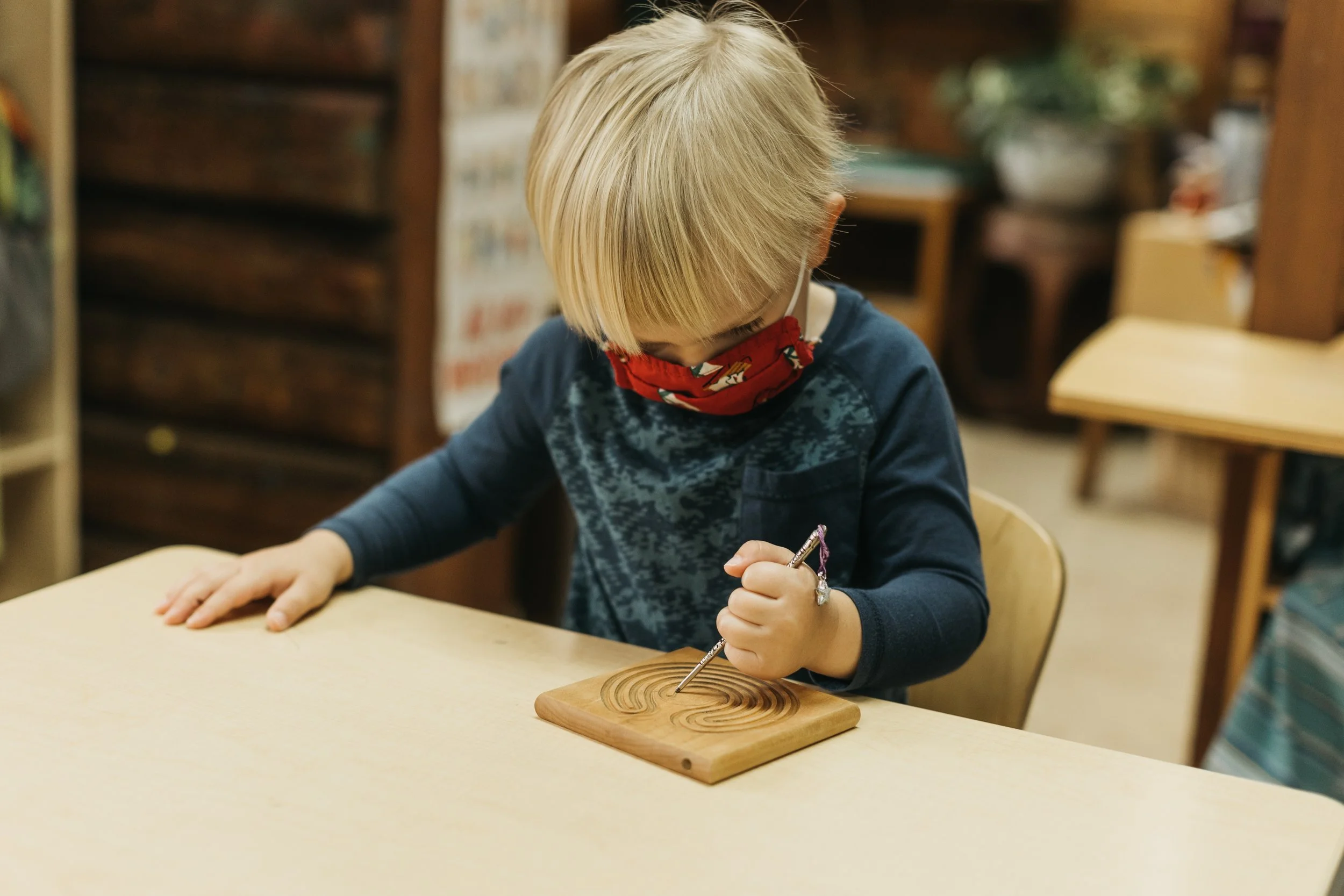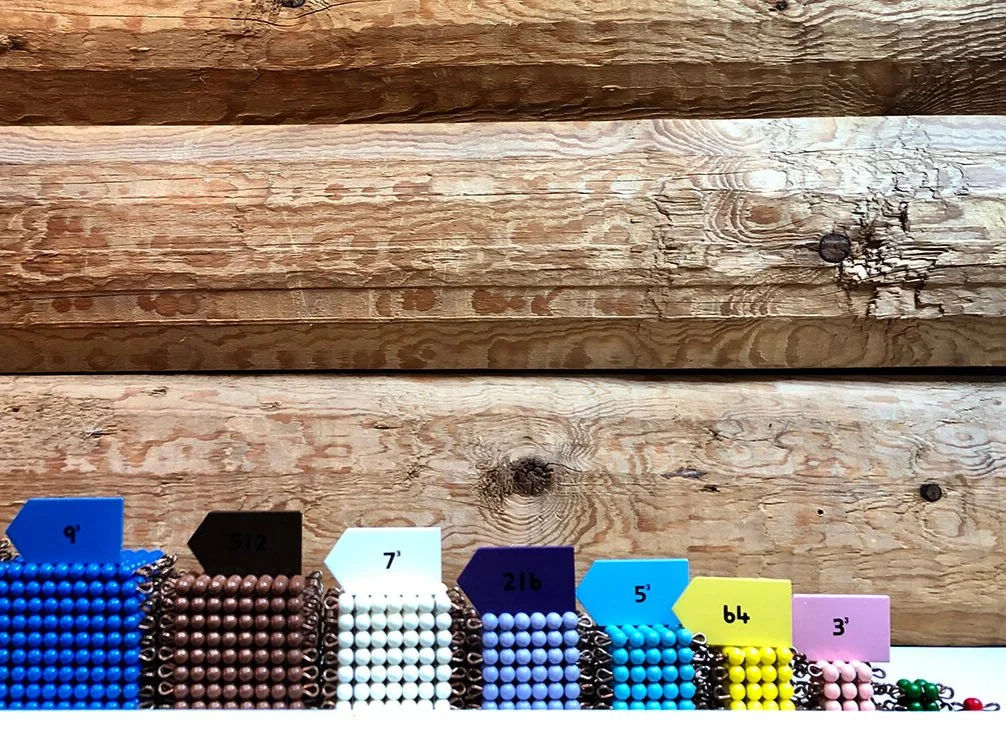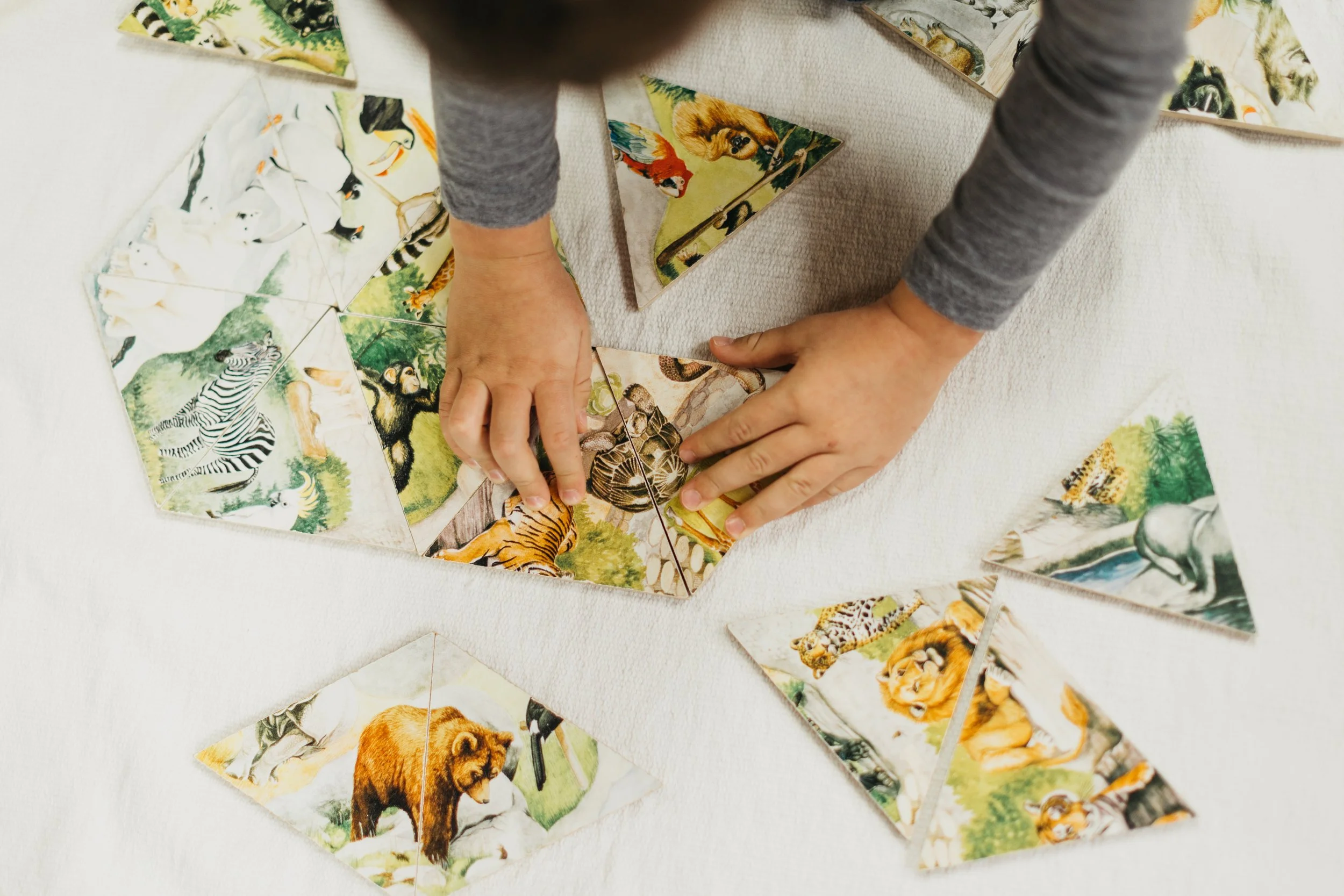Curriculum
The primary classroom is a generally quiet, harmonious environment where concentration and independence can deepen and grow. The activities center around six focus areas as described below. A constant thread is an ambiance where children can be spontaneous and learn through activities that interest them, thereby awakening their spirit and imagination.
-
The Practical Life area is truly the foundation of a successful Montessori classroom. Through the special dimension of our human tendency for activity, the child experiences the powerful motivation to take action, use, and partake in the activities of the Practical Life Area. The activities are exercises of purposeful movements designed to match the spontaneous need for activeness or work. Children will look for meaningful work, and since many of the Practical Life Activities are things they see their parents, teachers, and other adults doing (think sweeping, washing a table, watering a plant, or setting the dinner table), they are often eager to imitate and practice such an event. The child will work to do the activity with exactness through concentration and repetition, as a way to orient herself to the classroom. This way, the child is prepared to embark into other Areas of the classroom beyond the Practical Life Area.
-
The Sensorial Area is designed to perceive the five body-based senses of touch, hearing, smell, taste, and sight. These five senses distinguish the various, abstract qualities of the material world. In reality, there is a very limited material base that stimulates the five senses. It is best to explore these by “isolating” the experience of each sense.
All five senses are organized around the qualities they perceive. The Sensorial Area, in turn, is also structured to accommodate and explore the sense perceptions. The Sensorial Area offers us a way to develop a new level of mental clarity as it pertains to the material world. We may very well see, taste, smell, and feel everything quite differently after the experiences in this area of the Montessori classroom. -
The Language area of the classroom is rich in opportunities for exploration and expansion of the child’s spoken language and eventual literacy. The child will practice spoken language through verbal games and interactions with his peers. Individual games and lessons lead the child to writing, reading, and early reading analysis and grammar work, preparing him for lifelong literary success. Language extends into the entire environment. It involves every activity in the Casa. Language unifies all the areas of the classroom. Language activities are significant for individual development as well as the social cohesion of the child community as a whole.
-
Children experience math in their play through the exploration of shapes, patterns, and designs. The materials of the Mathematics area provide the child with a concrete, sensorial foundation for understanding mathematical concepts. As the child progresses through these materials, they transition from the concrete experience to abstract thinking. The Mathematics Area is the most fixed area in the Children’s House. It is designed to follow a rather distinct progression and consists of numerous parallel ‘crossover’ activities within each of its sections. In the body of knowledge that is Mathematics, there are three main components. First, there is Number or Magnitude, which includes a systematic treatment or attitude towards numbers. The second component to Mathematics is the Relationships between shapes and forms that exist in the universe. Lastly, there is the Representation of numbers, which includes the relationships of the Symbols. It is important to acknowledge that Mathematics is a Human Activity; we as human beings act mathematically because WE are aspects of the universe, thus, obeying the laws of the universe. Some of these activities are esoteric and some are mundane, resulting in both profound as well as rather basic actions on our behalf.
Today, some level of mathematical fluency is needed to participate in the daily life of most human cultures. Many cultures have developed numerous esoteric formats rooted in Mathematics. On a basic level, everyone operates upon some sort of mathematical language. Truly, math is the universal language! -
Our planet, the physical ‘structures’ of our material world, and the human experience of all people from around the world are part of a focus area called Geography and Culture. Geography and Culture can be seen throughout the classroom, especially in the Language and Sensorial areas. The Globes, Puzzle Maps of the Continents, and the Land Forms exercises are all part of the study of geography with a component of language attached to each one of them. In a Montessori classroom, geography also has a strong, significant human component that we often refer to as Culture. It includes the study of our physical environment and how we exist on this planet. We absolutely need clean air, water and plants for our existence and share with the children their role as a mere part of the web of life. Geography extends beyond the name of a place, land, or body of water in spoken language through the Enrichment of Vocabulary. The Guide tells true stories about the world and nurtures conversations about other continents and countries while providing worldly artifacts. Food, clothing, photographs, and the language of a people are shared. Most Geography exercises in the classroom connect the manipulative experience in the Sensorial Area to the Language of our physical, cultural, and contemporary world. It is the language that truly expands the geography experience. Of course, we hope to inspire travel and exploration of our planet through Geography and Culture as well as share with the children the vast similarities we truly have with our fellow Earthlings.
-
Creative Art Expression is woven throughout all the areas of the classroom. What is typically referred to as “art” is an expression through the use of various mediums and tools in our environment. Children of this age group are always expressing themselves through drawing, singing, dancing, and imaginative, dramatic play. We, as adults, often pursue expression as we try to recreate something we can see. The Art Expression Area of the Casa may well be the main area where a child asks for direct feedback. The Montessori Method tries to focus on the function and process of creativity. As a guide, it is important to focus on this as the main purpose and not the result. Feel free to ask the child something like: “Would you like to tell me something about your picture?” This is especially important to consider when it comes to the art expression of the older child. As with other Montessori work, the emphasis is still on the process, allowing the finished work to be merely a by-product. Remember, children are natural artists and to express this innate ability, all they need is opportunities in the environment to express themselves and their vision or experience through various mediums such as pastel crayons, colored pencils, easel painting, collage, water color, musical instruments, and dance interpretation.






